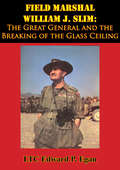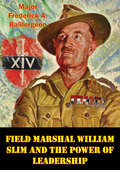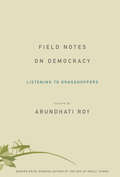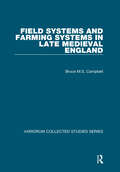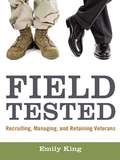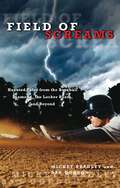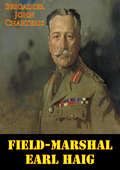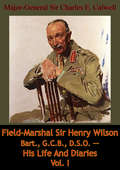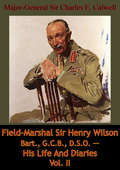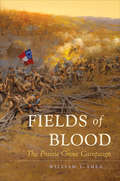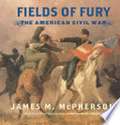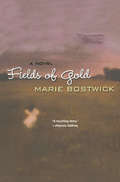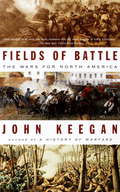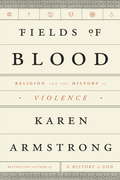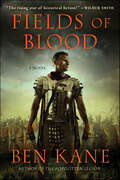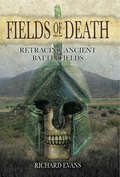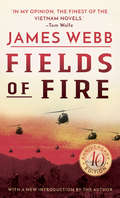- Table View
- List View
Field Marshal William J. Slim: The Great General and the Breaking of the Glass Ceiling
by LTC Edward P. EganField Marshal William J. Slim is considered by many historians to be one of the finest generals of World War II. His accomplishments were truly extraordinary. He commanded a polyglot army, consisting of six different nationalities speaking eight different languages, that fought in some of the most inhospitable, disease-ridden country in the world against the war's toughest opponent, the Japanese. In March 1942, he assumed command of a British-Indian force in Burma half way through the longest retreat in the British Army's history. Even though he was unable to reverse the disaster, he kept his force intact and led it to safety. Over the next three and one half years, despite very limited resources and several inept senior commanders, he rebuilt his force into an army that was able to inflict on the Japanese their greatest land defeat of World War II. In the process, he conducted four of the most classic operational campaigns of the war--the battle of the Second Arakan; the battles of Kohima and Imphal; the capture of Mandalay and Meiktila; and the pursuit to Rangoon. Throughout his career, but especially during World War II, Slim met all the criteria for a great general and strategic leader as set forth in Lord Wavell's Generals and Generalship. Despite these great accomplishments, Slim ran into several "glass ceilings" during World War II. Twice he was relieved of command, once immediately after his greatest battlefield victory. This study examines Field Marshal Slim's leadership. It takes a brief look at his biography, then compares him against Wavell's standards for generalship by highlighting events from his career that illustrate each standard. Finally, it addresses the issue of the "glass ceiling"--what it is, the events surrounding Slim's encounters with it, and how Slim was able to overcome it. The intent is to show that Slim was not only a great World War II general, but is still a model of leadership worthy of study by the U.S. Army.
Field Marshal William Slim And The Power Of Leadership
by Major Frederick A. BaillergeonOn 15 January 1942 the Japanese invaded Burma. Within months, the Japanese occupied the country and forced the Allied forces to conduct a brutal retreat into neighboring India. During the next three and one half years, both forces continued to fight in a campaign with the Allied forces retaking Burma in May 1945. One of the principle figures in this turnaround of the Allied Force was Field Marshal William Slim. During the Burma Campaign Slim served in several key leadership positions culminating as the 14 Army Commander. This focus of this study is to determine the role Slim played in the reconquest of Burma. Specifically, how did Field Marshal William Slim's organizational leadership actions (as defined in the U.S. Army leadership manual, FM 22-100) while serving as the 14 Army Commander, contribute to the Allies reconquest of Burma during World War II? It is hoped that the findings of this study will be of value to leaders of all levels currently fighting the Global War on Terrorism.
Field Marshal the Earl of Cavan: Soldier and Fox Hunter
by Michael SeniorField Marshal Lord Cavan (1865-1946) was one of the most distinguished commanders of the modern British army, but he divided opinion among his contemporaries. Some senior soldiers were disdainful. Field Marshal Sir Henry Wilson described him as ‘ignorant, pompous and vain’ and Brigadier General Sir James Edward Edmonds commented that Cavan ‘was bone from the neck upwards’. Yet many of Cavan’s subordinates praised him, saying ‘I had never seen Lord Cavan before and I was filled with admiration by the calm and quiet self-confidence of his manner’ and ‘Our new General, Lord Cavan, is simply A1 and the whole show runs like a well-oiled machine.’ So what were the real qualities and achievements of this remarkable but hitherto neglected officer who in a long career served in the Boer War and the First World War and then presided over the post-war reduction of the British army? Michael Senior, in the first full biography of Cavan, assesses him as a leader, a corps commander and an administrator, and places him among the front rank of the soldiers of his generation. He also explores Cavan’s personal life, his personality and how his aristocratic background, his wealth and his love of fox hunting affected his conduct in both war and peace.
Field Notes on Democracy: Listening to Grasshoppers
by Arundhati Roy"Gorgeously wrought...pitch-perfect prose...In language of terrible beauty, she takes India's everyday tragedies and reminds us to be outraged all over again."--Time MagazineCombining fierce conviction, deft political analysis, and beautiful writing, this is the essential new book from Arundhati Roy.This series of essays examines the dark side of democracy in contemporary India. It looks closely at how religious majoritarianism, cultural nationalism, and neo-fascism simmer just under the surface of a country that projects itself as the world's largest democracy.Roy writes about how the combination of Hindu Nationalism and India's neo-liberal economic reforms, which began their journey together in the early 1990s, are now turning India into a police state.She describes the systematic marginalization of religious and ethnic minorities, the rise of terrorism, and the massive scale of displacement and dispossession of the poor by predatory corporations. She also offers a brilliant account of the August 2008 uprising of the people of Kashmir against India's military occupation and an analysis of the November 2008 attacks on Mumbai.Field Notes on Democracy tracks the fault-lines that threaten to destroy India's precarious democracy and send shockwaves through the region and beyond.Praise for Field Notes on Democracy:"In her searing account of the actual practice of the world's largest democracy, Arundhati Roy calls for 'factual precision' alongside of the 'real precision of poetry.' Remarkably, she combines those achievements to a degree that few can hope to approach. Roy shows in painful detail how the beneficiaries of the highly admired 10 percent growth rate are enjoying a 'new secessionism,' leaving the great majority languishing in poverty and despair, with malnutrition reaching the same levels as sub-Saharan Africa. As surveillance and state terror extend, all under the guise of flourishing democracy, India is becoming 'a nation waiting to be accused,' a nation where a confession extracted under torture can lead to the brink of nuclear war, and where 'fascism's firm footprint has appeared' in ways reminiscent of the early years of Nazism. Most chilling of all is that much of the grim portrait is all too familiar in the West. Roy asks whether our shriveled forms of democracy will be 'the endgame of the human race'--and shows vividly why this is a prospect not to be lightly dismissed." --Noam Chomsky"After so much celebratory salesmanship about India the 'emerging market,' Roy draws us into India the actual country, peeling away the gloss until we are confronted with perhaps the most challenging question of our time: who and what are we willing to sacrifice in the name of development? Roy is one of the most confident and original thinkers of our time."--Naomi Klein"The notion of Democracy and the pleading for human compassion first came together in Sophocles and the Greek tragedies. More than two thousand years later we live under an economic world tyranny of unprecedented brutality, which depends upon the systematic abuse of words like Democracy or Progress. Arundhati Roy, the direct descendant of Antigone, resists and denounces all tyrannies, pleads for their victims, and unflinchingly questions the tragic. Reflect with her on the answers she receives from the political world today." --John BergerArundhati Roy is a world-renowned Indian author and global justice activist. From her celebrated Booker Prize-winning novel The God of Small Things to her prolific output of writing on topics ranging from climate change to war, the perils of free-market development in India, and the defense of the poor, Roy's voice has become indispensable to millions seeking a better world.
Field Recordings from the Inside: Essays
by Joe BonomoUsing as its epigraph and unifying principle Luc Sante’s notion that "Every human being is an archeological site,” Field Recordings from the Inside provides a deep and personal examination at the impact of music on our lives. Bonomo effortlessly moves between the personal and the critical, investigating the ways in which music defines our personalities, tells histories, and offers mysterious, often unbidden access into the human condition. The book explores the vagaries and richness of music and music-making-from rock and roll, punk, and R&B to Frank Sinatra, Nashville country, and Delta blues-as well as the work of a diverse group of artists and figures-Charles Lamb, music writer Lester Bangs, painter and television personality Bob Ross, child country musician Troy Hess, and songwriter Greg Cartwright.Mining the often complex natures and shapes of the creative process, Field Recordings from the Inside is a singular work that blends music appreciation, criticism, and pop culture from one of the most critically acclaimed music writers of our time.
Field Research in Political Science
by Lauren M. Maclean Benjamin L. Read Diana Kapiszewski Diana Kapiszewski Lauren M. MacLeanField research - leaving one's home institution in order to acquire data, information or insights that significantly inform one's research - remains indispensable, even in a digitally networked era. This book, the first of its kind in political science, reconsiders the design and execution of field research and explores its role in producing knowledge. First, it offers an empirical overview of fieldwork in the discipline based on a large-scale survey and extensive interviews. Good fieldwork takes diverse forms yet follows a set of common practices and principles. Second, the book demonstrates the analytic benefits of fieldwork, showing how it contributes to our understanding of politics. Finally, it provides intellectual and practical guidance, with chapters on preparing for field research, operating in the field and making analytic progress while collecting data, and on data collection techniques including archival research, interviewing, ethnography and participant observation, surveys, and field experiments.
Field Systems and Farming Systems in Late Medieval England (Variorum Collected Studies #903)
by Bruce M.S. CampbellThe later Middle Ages was an overwhelmingly rural world, with probably three out of four households reliant upon farming for a living. Yet conventional accounts of the period rarely do justice to the variety of ways in which the land was managed and worked. The thirteen essays collected in this volume draw upon the abundant documentary evidence of the period to explore that diversity. In the process they engage with the issue of classification - without which effective generalisation is impossible - and offer a series of solutions to that particularly thorny methodological challenge. Only through systematic and objective classification is it possible to differentiate between and map different field systems, husbandry types, and land-use categories. That, in turn, makes it possible to consider and evaluate the relative roles of soils and topography, institutional structures, and commercialised market demand in shaping farm enterprise both during the period of mounting population before the Black Death and the long era of demographic decline that followed it. What emerges is an agrarian world more commercialised, differentiated, and complex than is usually appreciated, whose institutional and agronomic contours shaped the course of agricultural development for centuries to come.
Field Tested: Recruiting, Managing, and Retaining Veterans
by Emily KingVeterans are a tremendous source of untapped talent and come with a wealth of skills and experience beyond those of typical civilian employees. Field Tested gives readers the insight and tools they need to recruit and retain veterans, and to maximize their value in any organization. A must-read for leaders, managers, and human resources professionals across industries, Field Tested uncovers key cultural differences between the military and civilian workplace, and reveals how these differences can affect employee performance, satisfaction, and retention. Complete with real-world examples, practical models, and savvy advice, this book shows readers how to: ò Attract and interview veterans ò On-board them quickly and effectively ò Position them for success ò Ensure a smooth cultural transition ò Manage performance ò Help them develop lasting careers. Smart companies that hire veterans owe it to themselves and their employees to under stand the unique considerations involved. This one-of-a-kind guide reveals how to make the most of AmericaÆs top talent.
Field of Screams: Haunted Tales from the Baseball Diamond, the Locker Room, and Beyond
by Dan Gordon Mickey BradleyA collection of ghost stories collected from baseball players, stadium personnel, umpires, front-office folks, and fans, whichexplores the sometimes amusing and sometimes spooky connection between baseball and the paranormal.
Field-Marshal Earl Haig
by Colonel John Buchan Brigadier John CharterisIncludes 30 maps, plans and illustrations.A detailed personal account of Earl Haig, the man and his principle campaigns, by his closest colleague and confidante. The renowned novelist Buchan, who served under Chateris during the First World War, provides a foreword.“General Charteris had the privilege of serving with Lord Haig in India and at Aldershot, and for the whole of the Great War with the exception of the last two months. During the Battle of the Somme I had the privilege of serving under General Charteris. When, in 1921, the Official History was taking shape, Sir J. E. Edmonds asked Lord Haig whom he would like to go through it on his behalf, with special reference to the work of the I Corps, the answer was: “Send it to Charteris. He knows as much about it as I do.”This book is therefore a study of Lord Haig’s career by one who was himself a sharer in its most momentous stages. It is also a study of a famous soldier by one who brings to the task not only a knowledge of war, but the understanding born of a deep affection. A great man, especially a great man of action, is apt to appear before the world as a combination of abstract powers and virtues, impressive like a statue set up in some public place, but a little remote from our common life...Future historians will discuss every detail of his campaigns, and every aspect of his genius. But in the meantime the world has cause to be grateful, I think, to General Charteris for providing these mémoires pour servir —a personal narrative of how Lord Haig appeared to a colleague and a friend.”-Foreword.“The most competent and authoritative biography of Haig published to date, written by one who was closely associated with him. The book throws much light on Allied strategy as well as on the problem of the high command.”- William L. Langer – Foreign Affairs magazine
Field-Marshal Sir Henry Wilson Bart., G.C.B., D.S.O. — His Life And Diaries Vol. I (Field-Marshal Sir Henry Wilson Bart., G.C.B., D.S.O. — His Life And Diaries #1)
by Marshal Ferdinand Foch Major-General Sir Charles E. Calwellthe First World War, who was a passionate "Westerner" and advocate of the Anglo-French alliance. Major-General C. E. Callwell recounts the story of the outspoken, opinionated and well connected Field Marshal using extensive quotes from his diary, often dripping with acerbic wit, in the greatest of detail."Field Marshal Sir Henry Wilson, an Irishman who in June 1922 was assassinated on his doorstep in London by Irish republicans, was one of the most controversial British soldiers of that age. Before 1914 he did much to secure the Anglo-French alliance and was responsible for the planning which saw the British Expeditionary Force successfully despatched to France after the outbreak of war with Germany. A passionate Irish unionist, he gained a reputation as an intensely 'political' soldier, especially during the 'Curragh crisis' of 1914 when some officers resigned their commissions rather than coerce Ulster unionists into a Home Rule Ireland. During the war he played a major role in Anglo-French liaison, and ended up as Chief of the Imperial General Staff, professional head of the army, a post he held until February 1922. After Wilson retired from the army, he became an MP and was chief security adviser to the new Northern Ireland government. As such, he became a target for nationalist Irish militants, being identified with the security policies of the Belfast regime, though wrongly with Protestant sectarian attacks on Catholics. He is remembered today in unionist Northern Ireland as a kind of founding martyr for the state. Wilson's reputation was ruined in 1927 with the publication of an official biography, which quoted extensively and injudiciously from his entertaining, indiscreet, and wildly opinionated diaries, giving the impression that he was some sort of Machiavellian monster."-Professor Keith Jeffrey.
Field-Marshal Sir Henry Wilson Bart., G.C.B., D.S.O. — His Life And Diaries Vol. II (Field-Marshal Sir Henry Wilson Bart., G.C.B., D.S.O. — His Life And Diaries #2)
by Marshal Ferdinand Foch Major-General Sir Charles E. CalwellThese two volumes form the official biography of Sir Henry Wilson, a key figure in the British Army during the First World War, who was a passionate "Westerner" and advocate of the Anglo-French alliance. Major-General C. E. Callwell recounts the story of the outspoken, opinionated and well connected Field Marshal using extensive quotes from his diary, often dripping with acerbic wit, in the greatest of detail."Field Marshal Sir Henry Wilson, an Irishman who in June 1922 was assassinated on his doorstep in London by Irish republicans, was one of the most controversial British soldiers of that age. Before 1914 he did much to secure the Anglo-French alliance and was responsible for the planning which saw the British Expeditionary Force successfully despatched to France after the outbreak of war with Germany. A passionate Irish unionist, he gained a reputation as an intensely 'political' soldier, especially during the 'Curragh crisis' of 1914 when some officers resigned their commissions rather than coerce Ulster unionists into a Home Rule Ireland. During the war he played a major role in Anglo-French liaison, and ended up as Chief of the Imperial General Staff, professional head of the army, a post he held until February 1922. After Wilson retired from the army, he became an MP and was chief security adviser to the new Northern Ireland government. As such, he became a target for nationalist Irish militants, being identified with the security policies of the Belfast regime, though wrongly with Protestant sectarian attacks on Catholics. He is remembered today in unionist Northern Ireland as a kind of founding martyr for the state. Wilson's reputation was ruined in 1927 with the publication of an official biography, which quoted extensively and injudiciously from his entertaining, indiscreet, and wildly opinionated diaries, giving the impression that he was some sort of Machiavellian monster."-Professor Keith Jeffrey.
Fields Of Blood
by William L. SheaWilliam Shea offers a gripping narrative of the events surrounding Prairie Grove, Arkansas, one of the great unsung battles of the Civil War that effectively ended Confederate offensive operations west of the Mississippi River. Shea provides a colorful account of a grueling campaign that lasted five months and covered hundreds of miles of rugged Ozark terrain. In a fascinating analysis of the personal, geographical, and strategic elements that led to the fateful clash in northwest Arkansas, he describes a campaign notable for rapid marching, bold movements, hard fighting, and the most remarkable raid of the Civil War.
Fields Of Fury: The American Civil War
by James M. McPhersonPulitzer Prize award-winning historian James M. McPherson has written for young readers a stirring account of the greatest conflict to happen on our nation's soil, the Civil War, bringing to life the tragic struggle that divided not only a nation, but also friends and family. <p><p> From the initial Confederate attack on Fort Sumter, to the devastating loss of life at Shiloh as Ulysses S. Grant led the Union to unexpected victory, to the brilliance of Stonewall Jackson's campaign at Shenandoah, to General Pickett's famous charge at Gettysburg, to the Union's triumph at Appo-mattox Court House, Fields of Fury details the war that helped shape us as a nation. Also included are personal anecdotes from the soldiers at the battlefront and the civilians at home, as well as profiles of historical luminaries such as Robert E. Lee, Abraham Lincoln, Jefferson Davis, and Ulysses S. Grant. McPherson also explores the varied roles that women played during the war, healthcare on the battlefield, and the demise of slavery. McPherson's narrative is highlighted with black-and-white photographs taken by Civil War photographers Mathew Brady and Timothy O'Sullivan, period oil paintings, and key campaign and battlefield maps, that make Fields of Fury the consummate book on the American Civil War for kids.
Fields Of Gold (Thorndike Clean Reads Ser.)
by Marie BostwickThis would be easier if I were writing about someone else. Then I could change it, fatten up the thin parts and leave out the dull ones, turning them twice like frayed collars and cuffs, making them over into something more romantic than they really were, but then the remembering would be neither so painful, nor so sweet. I suppose you can't have one without the other. . . Evangeline Glennon knows plenty about life's highs and lows. Still, she feels lucky, surrounded as she is by people who care deeply: Papa, who's never lost his Irish brogue or the twinkle in his eye; endlessly practical, generous Mama; and steadfast best friend Ruby. Romance would be too much for a girl like Eva to expect. Then again, love has a tendency to find those who aren't looking for it. . . Out of a clear blue sky, a dashing young aviator makes an impossibly gentle landing in Papa's Oklahoma wheat field. After taking her up in his plane, "Slim" leaves Eva with an exhilarating new perspective--and an even more precious gift that changes her forever. But that's only the beginning. The world is changing, too--and only the strongest in body and spirit will weather what is to come. Now, while tracing from afar the progress of the brave young barnstormer she knew so briefly, Eva stitches her heart and soul into intricate quilts whose images take extraordinary form from the heartbreak and joy of parallel lives. . . "A lyrical, lush, and lovely novel from a clever and talented new writer." --Jane Green "A gripping, heartwarming story. . .complete with fascinating characters and a page-turning plot." --Dorothy Garlock Marie Bostwick Skinner was born and raised in the Northwest. Since marrying the love of her life twenty-three years ago, she has never known a moment's boredom. Marie and her family have moved a score of times, living in eight U.S. states and two Mexican cities, and collecting a vast and cherished array of friends and experiences. Marie now lives with her husband and three handsome sons in Connecticut where she writes, reads, quilts, and is privileged to serve the women of her local church.
Fields of Authority: Special Purpose Governance in Ontario, 1815-2015
by Jack LucasEverywhere we turn in Canadian local politics - from policing to transit, education to public health, planning to utilities - we encounter a peculiar institutional animal: the special purpose body. These "ABCs" of local government - library boards, school boards, transit authorities, and many others - provide vital public services, spend large sums of public money, and raise important questions about local democratic accountability. In Fields of Authority, Jack Lucas provides the first systematic exploration of local special purpose bodies in Ontario. Drawing on extensive research in local and provincial archives, Lucas uses a "policy fields" approach to explain how these local bodies in Ontario have developed from the nineteenth century to the present. A lively and accessible study, Fields of Authority will appeal to readers interested in Canadian political history, urban politics, and urban public policy.
Fields of Battle
by John KeeganAt once a grand tour of the battlefields of North America and an unabashedly personal tribute to the military prowess of an essentially unwarlike people, Fields of Battle spans more than two centuries and the expanse of a continent to show how the immense spaces of North America shaped the wars that were fought on its soil. of photos.
Fields of Battle: Pearl Harbor, the Rose Bowl, and the Boys Who Went to War
by Brian CurtisA riveting story of football, wartime, and boys becoming men—from facing off in the 1942 Rose Bowl to serving together in WWII.In the wake of the bombing of Pearl Harbor, the 1942 Rose Bowl was moved from Pasadena to Durham, North Carolina, out of fear of Japanese attacks on the West Coast. Duke University faced off against underdog Oregon State College, with both teams preparing for a grueling fight on the football field while their thoughts drifted to the battlefields they would soon encounter.On New Year’s Day, the teams played one of the most unforgettable games in history. Shortly afterward, many of the players and coaches entered the military and would quickly become brothers on the battlefield. Scattered around the globe, the lives of Rose Bowl participants would intersect in surprising ways, as they served in Iwo Jima and Normandy, Guadalcanal and the Battle of the Bulge. In one powerful encounter, OSC’s Frank Parker saved the life of Duke’s Charles Haynes in Italy. And one OSC player, Jack Yoshihara, a Japanese-American, never had the chance to play in the game or serve his country, as he was sent to an internment camp in Idaho.In Fields of Battle, Brian Curtis sheds light on a little-known slice of American history with an intimate account of the teamwork, grit, and determination that took these men onto the gridiron and into combat.
Fields of Blood
by Karen ArmstrongFrom the renowned and bestselling author of A History of God, a sweeping exploration of religion's connection to violence. For the first time in American history, religious self-identification is on the decline. Some have cited a perception that began to grow after September 11: that faith in general is a source of aggression, intolerance and divisiveness--something bad for society. But how accurate is that view? And does it apply equally to all faiths? In these troubled times, we risk basing decisions of real and dangerous consequence on mistaken understandings of the faiths subscribed around us, in our immediate community as well as globally. And so, with her deep learning and sympathetic understanding, Karen Armstrong examines the impulse toward violence in each of the world's great religions. The comparative approach is new: while there have been plenty of books on jihad or the Crusades, this book lays the Christian and the Islamic way of war side by side, along with those of Buddhism, Hinduism, Confucianism, Daoism and Judaism. Each of these faiths arose in agrarian societies with plenty of motivation for violence: landowners had to lord it over peasants and warfare was essential to increase one's landholdings, the only real source of wealth before the great age of trade and commerce. In each context, it fell to the priestly class to legitimize the actions of the state. And so the martial ethos became bound up with the sacred. At the same time, however, their ideologies developed that ran counter to the warrior code: around sages, prophets and mystics. Within each tradition there grew up communities that represented a protest against the injustice and violence endemic to agrarian society. This book explores the symbiosis of these 2 impulses and its development as these confessional faiths came of age. The aggression of secularism has often damaged religion and pushed it into a violent mode. But modernity has also been spectacularly violent, and so Armstrong goes on to show how and in what measure religions, in their relative maturity, came to absorb modern belligerence--and what hope there might be for peace among believers in our time.
Fields of Blood: A Novel (Hannibal #2)
by Ben KaneHannibal's campaign to defeat Rome continues. Having brought his army safely over the Alps in winter, he now marches south to confront the enemy. With him is a young soldier, Hanno. Like his general, Hanno burns to vanquish Rome. Never has the possibility seemed so likely. Facing Hanno is his former friend, Quintus, whom Hanno met while in Roman captivity. A bitter quarrel with his father led Quintus to join the Roman infantry under an assumed name. Among his legionaries, he finds that his enemies are not just the Carthaginians, but men of his own side. A stealthy game of cat and mouse is being played, with Hannibal seeking to fight, and Rome's generals avoiding battle. But battle cannot be delayed for much longer. Eventually, the two armies meet under a fierce summer sun in August in the south of Italy. The place is Cannae-the fields of blood. The encounter will go down in history as one of the bloodiest battles ever fought, a battle in which Hanno and Quintus know they must fight as never before-just to stay alive.
Fields of Blood: Religion and the History of Violence
by Karen ArmstrongFrom the renowned and best-selling author of A History of God, a sweeping exploration of religion and the history of human violence. For the first time, religious self-identification is on the decline in American. Some analysts have cited as cause a post-9/11perception: that faith in general is a source of aggression, intolerance, and divisiveness--something bad for society. But how accurate is that view? With deep learning and sympathetic understanding, Karen Armstrong sets out to discover the truth about religion and violence in each of the world's great traditions, taking us on an astonishing journey from prehistoric times to the present. While many historians have looked at violence in connection with particular religious manifestations (jihad in Islam or Christianity's Crusades), Armstrong looks at each faith--not only Christianity and Islam, but also Buddhism, Hinduism, Confucianism, Daoism, and Judaism--in its totality over time. As she describes, each arose in an agrarian society with plenty powerful landowners brutalizing peasants while also warring among themselves over land, then the only real source of wealth. In this world, religion was not the discrete and personal matter it would become for us but rather something that permeated all aspects of society. And so it was that agrarian aggression, and the warrior ethos it begot, became bound up with observances of the sacred. In each tradition, however, a counterbalance to the warrior code also developed. Around sages, prophets, and mystics there grew up communities protesting the injustice and bloodshed endemic to agrarian society, the violence to which religion had become heir. And so by the time the great confessional faiths came of age, all understood themselves as ultimately devoted to peace, equality, and reconciliation, whatever the acts of violence perpetrated in their name.Industrialization and modernity have ushered in an epoch of spectacular and unexampled violence, although, as Armstrong explains, relatively little of it can be ascribed directly to religion. Nevertheless, she shows us how and in what measure religions, in their relative maturity, came to absorb modern belligerence--and what hope there might be for peace among believers of different creeds in our time.At a moment of rising geopolitical chaos, the imperative of mutual understanding between nations and faith communities has never been more urgent, the dangers of action based on misunderstanding never greater. Informed by Armstrong's sweeping erudition and personal commitment to the promotion of compassion, Fields of Blood makes vividly clear that religion is not the problem.From the Hardcover edition.
Fields of Combat: Understanding PTSD among Veterans of Iraq and Afghanistan (The Culture and Politics of Health Care Work)
by Erin P. Finley"If you consider Iraq—like I do, probably twenty-nine out of thirty days—to be the pinnacle of your life, then where do you go from there? And I'm sure that a lot of veterans feel that way. To them, that was it. That was everything. So now what? They have to find something meaningful and purposeful.""When I got back from Afghanistan, there was not even so much as a briefing that said, 'Let us know if you're having problems.' There wasn't so much as a phone number. There was literally nothing.""I knew it was crazy. I was thinking, the guy on the roof's either a sniper or he's going to radio ahead. And then I thought, this is San Antonio. There's not snipers on the roof, nobody's going to blow me up here.""Whenever I look at people back here at home, I know what they're going to look like dead. I know what they look like with their brains blown out or jaws blown off or eyes pulled out. When I look at somebody I see that, to this day."—Voices of veterans interviewed in Fields of CombatFor many of the 1.6 million U.S. service members who have served in Iraq and Afghanistan since 2001, the trip home is only the beginning of a longer journey. Many undergo an awkward period of readjustment to civilian life after long deployments. Some veterans may find themselves drinking too much, unable to sleep or waking from unspeakable dreams, lashing out at friends and loved ones. Over time, some will struggle so profoundly that they eventually are diagnosed with post-traumatic stress Disorder (PTSD).Both heartbreaking and hopeful, Fields of Combat tells the story of how American veterans and their families navigate the return home. Following a group of veterans and their personal stories of war, trauma, and recovery, Erin P. Finley illustrates the devastating impact PTSD can have on veterans and their families. Finley sensitively explores issues of substance abuse, failed relationships, domestic violence, and even suicide and also challenges popular ideas of PTSD as incurable and permanently debilitating. Drawing on rich, often searing ethnographic material, Finley examines the cultural, political, and historical influences that shape individual experiences of PTSD and how its sufferers are perceived by the military, medical personnel, and society at large. Despite widespread media coverage and public controversy over the military's response to wounded and traumatized service members, debate continues over how best to provide treatment and compensation for service-related disabilities. Meanwhile, new and highly effective treatments are revolutionizing how the Department of Veterans Affairs (VA) provides trauma care, redefining the way PTSD itself is understood in the process. Carefully and compassionately untangling each of these conflicts, Fields of Combat reveals the very real implications they have for veterans living with PTSD and offers recommendations to improve how we care for this vulnerable but resilient population.
Fields of Death: Retracing Ancient Battlefields
by Richard EvansRichard Evans revisits the sites of a selection of Greek and Roman battles and sieges to seek new insights. The battle narratives in ancient sources can be a thrilling read and form the basis of our knowledge of these epic events, but they can just as often provide an incomplete or obscure record. Details, especially those related to topographical and geographical issues which can have a fundamental importance to military actions, are left tantalisingly unclear to the modern reader. The evidence from archaeological excavation work can sometimes fill in a gap in our understanding, but such an approach remains uncommon in studying ancient battles. By combining the ancient sources and latest archaeological findings with his personal observations on the ground, Richard Evans brings new perspectives to the dramatic events of the distant past. For example, why did armies miss one another in what we might today consider relatively benign terrain? Just how important was the terrain in determining victory or defeat in these clashes.The author has carefully selected battles and sieges to explore, first of all to identify their locations and see how these fit with the ancient evidence. He then examines the historical episodes themselves, offering new observations from first-hand study of the field of battle along with up-to-date photographs, maps and diagrams. In the process he discusses whether and how the terrain has since been changed by land use, erosion and other factors, and the extent to which what we see today represents a real connection with the dramatic events of the distant past. This first volume considers: 1. The Greek Victory over the Persians at Marathon (490 BC)2. Leonidas and his Three Hundred Spartans at Thermopylae (480 BC)3. The Athenian Siege of Syracuse (414-413 BC)4. The Syracusan Siege of Motya (397 BC)5. Alexander's Defeat of Darius at Issus (333 BC)6. Hannibal's Victory at Cannae (216 BC)7. Titus Quinctius Flamininus and Philip V at Cynoscephalae (197 BC)8. Gaius Marius' Victory over the Teutones at Aquae Sextiae (102 BC)9. Octavian versus Antony and Cleopatra of Egypt: The Battle of Actium (31 BC)10. The First Battle of Bedriacum (April AD 69)
Fields of Fire
by Terry CoppWith Fields of Fire, Terry Copp challenges the conventional view that the Canadian contribution to the Battle of Normandy was a "failure" - that the allies won only through the use of brute force, and that the Canadian soldiers and commanding officers were essentially incompetent. His detailed and impeccably researched analysis of what actually happened on the battlefield portrays a flexible, innovative army that made a major, and successful, contribution to the defeat of the German forces in just seventy-six days.Challenging both existing interpretations of the campaign and current approaches to military history, Copp examines the Battle of Normandy, tracking the soldiers over the battlefield terrain and providing an account of each operation carried out by the Canadian army. In so doing, he illustrates the valour, skill, and commitment of the Allied citizen-soldier in the face of a well-entrenched and well-equipped enemy army.This new edition of Copp's best-selling, award-winning history includes a new introduction that examines the strategic background of the Battle of Normandy.
Fields of Fire: A Novel (A\mayflower Book Ser.)
by James WebbThey each had their reasons for being a soldier.They each had their illusions. Goodrich came from Harvard. Snake got the tattoo -- Death Before Dishonor -- before he got the uniform. And Hodges was haunted by the ghosts of family heroes.They were three young men from different worlds plunged into a white-hot, murderous realm of jungle warfare as it was fought by one Marine platoon in the An Hoa Basin, 1969. They had no way of knowing what awaited them. Nothing could have prepared them for the madness to come. And in the heat and horror of battle they took on new identities, took on each other, and were each reborn in fields of fire....Fields of Fire is James Webb's classic, searing novel of the Vietnam War, a novel of poetic power, razor-sharp observation, and agonizing human truths seen through the prism of nonstop combat. Weaving together a cast of vivid characters, Fields of Fire captures the journey of unformed men through a man-made hell -- until each man finds his fate.From the Paperback edition.
